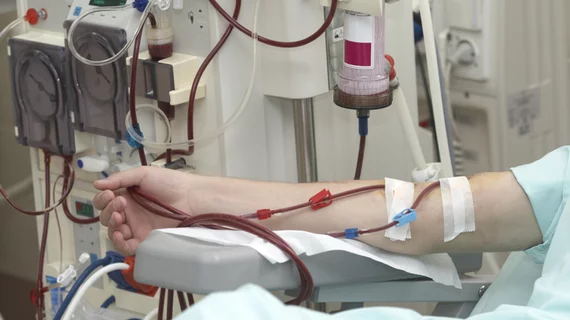AI charts course of care for chronic kidney disease
Researchers in Italy have used machine learning to accurately predict when a patient with chronic kidney disease will need dialysis. The technique may facilitate personalized care and optimized treatment planning.
Marco Masseroli, PhD, of the Polytechnic University of Milan and colleagues developed multiple models en route to settling on one that predicted impending renal failure, meaning within the next 12 months, with 94% accuracy, 91% specificity and 96% sensitivity.
The work is described in the September edition of Computer Methods and Programs in Biomedicine.
In introducing the study, the authors note that chronic kidney disease has numerous possible causes and presentations, affects around 30 million Americans and costs U.S. healthcare more than $32 billion.
Early detection is key to planning appropriate treatment for preserving and extending a good quality of life before the onset of total kidney failure.
Hence the utility of AI in accurately forecasting disease progression patient by patient.
The final predictive model Masseroli and team developed, a set of Extremely Randomized Tree classifiers, crunched 27 features. These included levels of creatinine, urea and red cells in the blood, urine-specific gravity and a computed estimate of glomerular filtration rate, which gives an idea of overall kidney function.
Clinical improvements potentially aided by this model include stratifying and scheduling patients by risk level, Masseroli and team report.
Meanwhile providers would realize advantages in operational and administrative aspects.
“The resources used by the hospital (in terms of staff, department crowding, exam prescription, etc.) and the time and energy of the patient undergoing the clinical encounters can be remarkably optimized,” Masseroli and colleagues write. “The beginning of the dialysis treatment itself can be planned in advance with precision, allowing both clinicians and patients to organize themselves in the most appropriate manner.”
The authors comment in their discussion section:
The availability of our method allows best planning of the next clinical check or of the beginning of the dialysis treatment, prioritizing the controls of patients at risk and allowing clinicians and end-staging patients to organize themselves in the most appropriate manner. Furthermore, it provides more information on the chronic kidney disease progression of a specific patient, analyzing how the computational predictions change from a clinical check to the subsequent ones with respect to the administered treatment, the lifestyle or the diet of the patient.”

